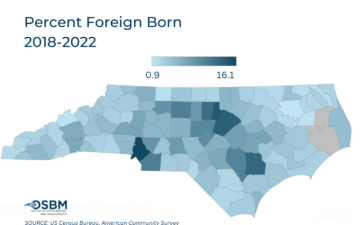The Center for Women’s Health Research (CWHR) at the University of North Carolina School of Medicine released the 12th edition of our North Carolina Women’s Health Report Card on May 9, 2022. This document is a progress report on the health and health care needs of North Carolina’s 5+ million women.
Current areas of research targeted by the Center include prevention, cancers affecting women, chronic disease (including cardiovascular health, diabetes, and obesity), women’s mental health, and substance abuse. It is the only health report of its kind in North Carolina.
Carolina Demography collected the data found within this report. A complete list of data indicators and highlights from the report is available from CWHR.
Previous editions of the Women’s Health Report Card have been released biennially and tracked the state’s female health statistics in two year increments. The 2022 edition presents data from 2018-2022. Previous editions of the report card are also available for comparison.
Center for Women's Health Research (CWHR)
To identify data sources providing an accurate picture of women's health in the state
2022 NC Women's Health Report Card

Last week, the U.S (United States). Census Bureau released 2023 county population estimates. These annual estimates tell us how county populations in North Carolina have changed over the course of a year: in this case, between July 1, 2022 and…

Deciding which educational pathway to pursue is often a daunting decision for a high schooler transitioning to postsecondary education. There are many questions a student must ask. Do I want to pursue a credential or a degree awarding program? What…

Dr. Michael Cline is the state demographer for North Carolina at the Office of State Budget and Management and has given us permission to re-post his content here. The original version of this piece is here. The foreign-born population in…
Your support is critical to our mission of measuring, understanding, and predicting population change and its impact. Donate to Carolina Demography today.